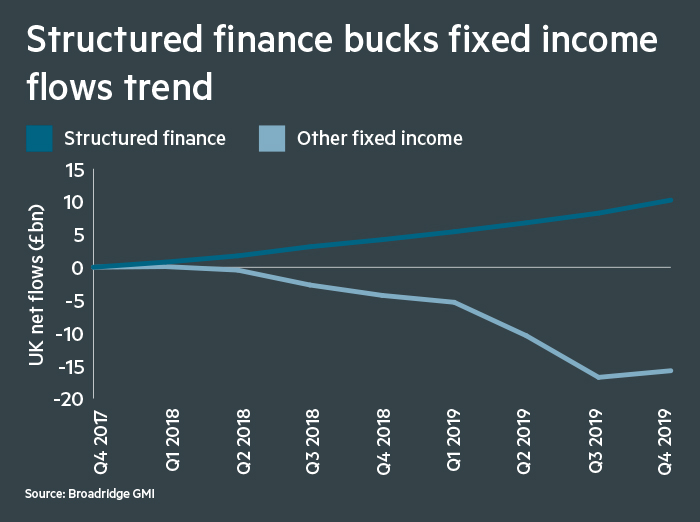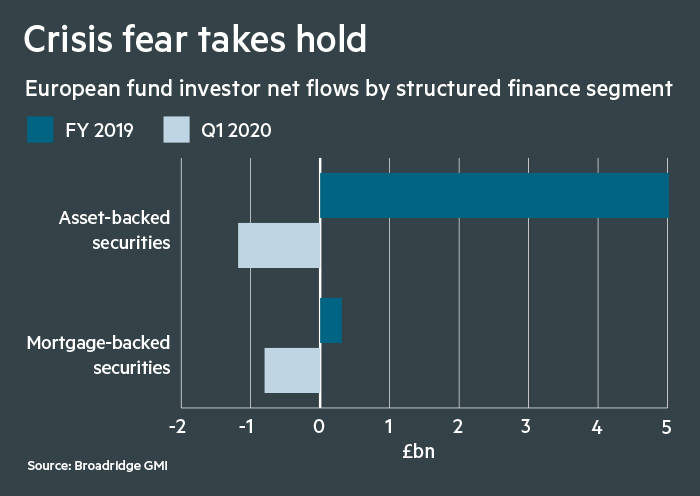The multi-faceted world of structured finance appeals to UK defined benefit schemes, as it provides security of income and attractive yields. However, pension funds still fear these investments due to its connection with the 2008 financial crisis, writes Broadridge’s Hal La Thangue.
Structured finance is a broad church. It spans mortgage-backed securities, collateralised loan obligations and a diverse array of asset-backed securities, such as car loans. An underlying characteristic common to the various investment segments is that each provides contractual cash flows that are ultimately backed by ringfenced, often physical, assets.
Despite the complexity of structured finance, the UK’s corporate DB schemes have been drawn to the asset class in droves. Since the end of 2017, Broadridge has recorded £10bn in new flows from this channel, while the rest of the fixed income universe has struggled. 
Most schemes are unable to navigate the complexity of the structured finance landscape and have chosen to employ expert third-party managers to run the assets. Typical strategies possess a wide opportunity set to ensure maximum diversification and allow managers bandwidth to swoop in on attractively priced assets.
Security of income and attractive yields drive schemes
Structured finance is a key component of the trend towards generating a ‘secure income’; one which is collateralised, has a high degree of certainty and has additional protection against defaults.
The need for income is becoming more and more pressing as the cash flow position of schemes deteriorates. In 2018, DB schemes had a cash flow deficit of £7.3bn after accounting for investment income. Structured finance therefore exists as a useful tool in the transition to cash flow-driven investing.
Driven by ‘complexity premia’, the asset class can provide higher levels of income than investment-grade bonds without having to sacrifice credit ratings. Crucially, schemes do not have to hunt for yield in notoriously volatile high-yield bond markets.
This feature also leaves room for growth, allowing schemes to achieve the dual objectives of cash flow generation and funding level improvements.
Echoes of the financial crisis linger
Having been blamed as one of the triggers for the financial crisis, due to its association with sub-prime mortgages and synthetic collateralised debt obligations, issuance of structured finance plummeted in the late 2000s. Despite colossal damage to the reputation of the asset class, issuance, most notably in the US, has been on the rise to meet increased demand.
In the wake of Covid-19, some observers will undoubtedly be worried about a potential repeat of events as the possibility of a lasting recession lingers and the financial position of individuals and corporates are strained.
Although most funds have their assets invested in safer investment-grade securities, initial evidence from the fund universe suggests that some investors are acting on their fears. 
European investors withdrew £0.8bn from the MBS segment and £1.2bn from broader ABS funds in the first quarter of 2020, after a strong 2019.
As with many asset classes, structured finance has taken a hit from the pandemic, but many will be watching it with particular trepidation as echoes of the past grow louder. Managers will have to prove their worth.
Hal La Thangue is senior consultant in the global insights team at Broadridge Financial Solutions






















